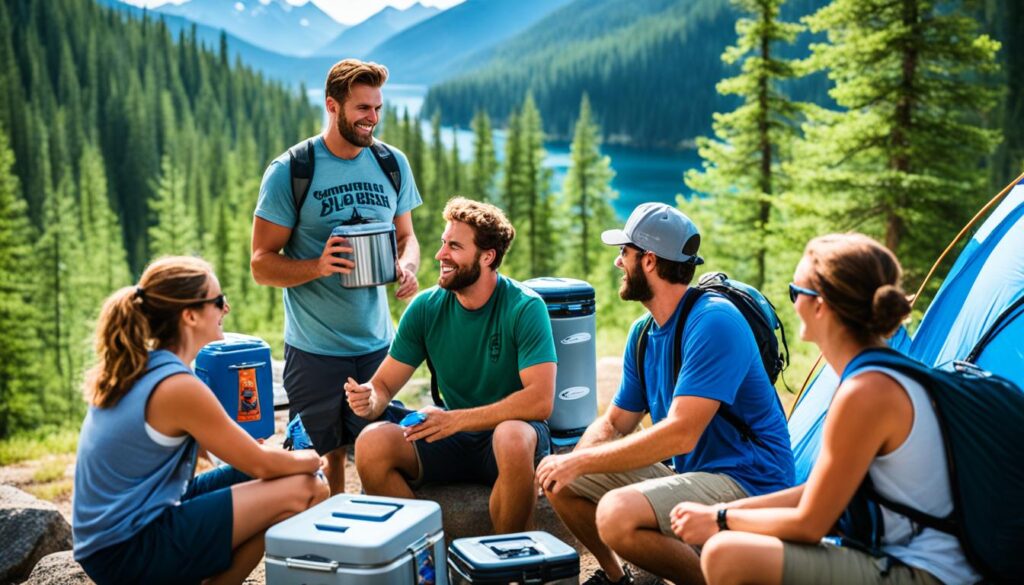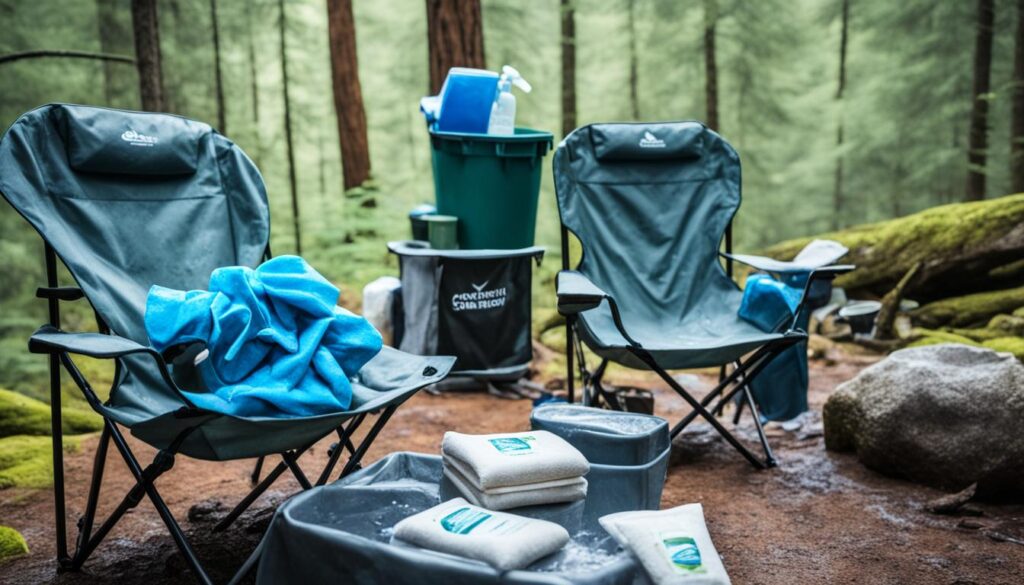When it comes to camping, having the right cooler size is essential for keeping your food and drinks fresh and cool. But with so many options available, it can be overwhelming to choose the perfect cooler for your needs. In this guide, I’ll walk you through the factors to consider when selecting a cooler size for camping, ensuring you have everything you need to make an informed decision.
Key Takeaways:
- Consider the capacity of the cooler, measured in quarts, and the ratio of ice to contents for efficient packing.
- Personal coolers are ideal for day trips, while medium to large coolers are better suited for family outings or extended camping trips.
- Think about the insulation and ice retention capabilities of the cooler, especially for longer trips.
- Ensure the cooler is portable and easy to transport, considering its weight and any additional features like wheels or handles.
- Explore specialty coolers and accessories that may enhance your camping experience.
When it comes to choosing the right cooler size for your camping trip, understanding cooler capacities is key. Cooler capacities are typically measured in quarts, and it’s important to know how this measurement translates to the amount of food and drinks you can pack.
Personal Coolers
For individual or two-person day trips, personal coolers with capacities ranging from 5 to 16 quarts are a great option. These compact coolers offer enough space to keep your refreshments cool without being too bulky or cumbersome.
Medium Coolers
For small family outings or weekend camping trips, medium coolers with capacities between 17 and 35 quarts are ideal. These coolers provide enough room to store food and drinks for a few days while still being relatively portable.
Large Coolers
If you’re planning a larger gathering or an extended camping trip, a large cooler with a capacity above 36 quarts would be the best choice. These coolers offer ample space to store food, drinks, and ice for multiple people and longer durations.
The ideal cooler size for your camping adventure depends on several factors, including the number of people, the duration of your trip, and the type of food and drinks you plan to bring. By considering these factors and understanding cooler capacities, you can make an informed decision and ensure that you have a cooler that meets your needs.
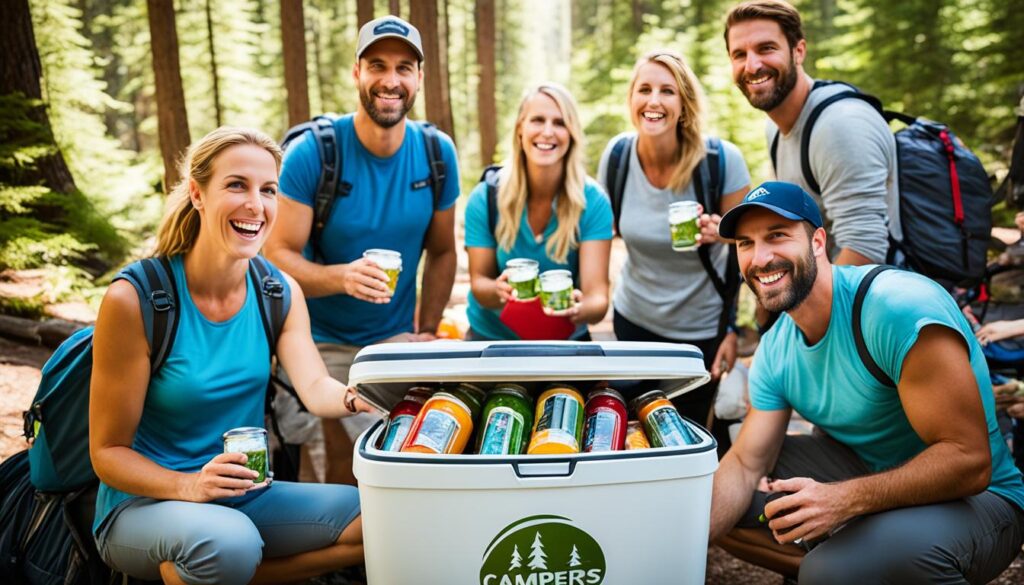
Next, we’ll explore the importance of insulation and ice retention in coolers, and how they can affect your camping experience.
Considering Insulation and Ice Retention
When it comes to choosing the right cooler size, insulation and ice retention are crucial factors to consider. A well-insulated cooler can significantly impact its performance in keeping your food and drinks cold, especially during extended camping or fishing trips.
One key aspect of insulation is the thickness of the cooler’s walls. Coolers with thicker walls generally offer better insulation, which helps in maintaining the desired temperature inside the cooler. This is particularly important for situations where you need to keep your perishable items cold for several days.
A cooler’s ice retention capability is another important aspect to evaluate. It refers to the cooler’s ability to keep the ice from melting for an extended period. A cooler with good ice retention ensures that your food and drinks stay cold and fresh throughout your camping adventure.
Larger coolers tend to have better insulation and ice retention capabilities due to their higher insulation-to-surface-area ratio. A larger cooler can accommodate more ice, allowing it to maintain a cooler temperature for a longer duration. It is worth investing in a larger cooler if extended ice retention is a priority for your camping trips.
| Cooler Size | Insulation | Ice Retention |
|---|---|---|
| Small (Personal Cooler) | Fair | 1-3 days |
| Medium Cooler | Good | 2-4 days |
| Large Cooler | Excellent | 3-7 days |
As seen in the table above, larger coolers generally offer better insulation and provide longer ice retention. However, it’s important to note that while larger coolers have improved performance, they do require more ice to keep the internal temperature consistently low.
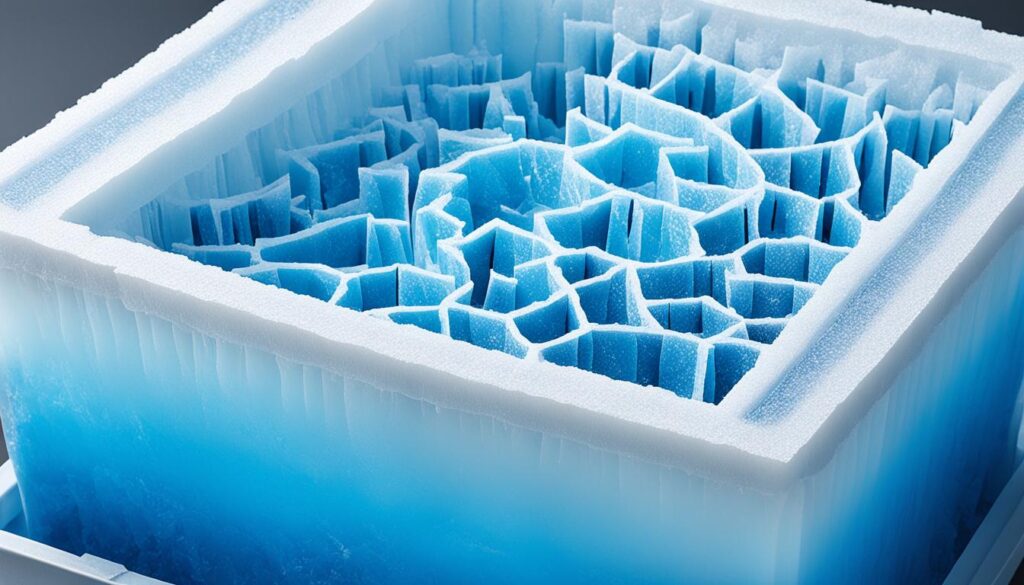
With the right insulation and ice retention capabilities, your cooler can perform exceptionally well, keeping your food and drinks at an optimal temperature throughout your camping trip.
Evaluating Portability and Transportation
While choosing the right cooler size is crucial, it’s equally important to consider the cooler’s portability and ease of transportation. The ability to easily carry or transport your cooler can greatly enhance your camping experience.
Smaller coolers, such as personal or compact models, are generally easier to carry due to their lighter weight and more manageable size. These coolers are perfect for day trips or solo adventures when you need to keep your drinks and snacks cool on the go. They are designed to be lightweight and easy to handle, allowing you to navigate through rugged terrains or crowded campsites without any hassle.
However, if you’re planning a family outing or an extended camping trip that requires larger quantities of food and drinks, a wheeled cooler might be the ideal option. Wheeled coolers eliminate the need to carry heavy loads by providing convenient wheels and a sturdy handle for easy transportation. These coolers are perfect for situations where you need to cover long distances or traverse uneven surfaces without straining your back or shoulders.
| Cooler Type | Features | Benefits |
|---|---|---|
| Small and Compact Coolers | – Lightweight and easy to carry – Perfect for day trips or solo adventures – Maneuverable in tight spaces | – Portable and convenient – Keeps essentials cool on the go – Ideal for short excursions |
| Wheeled Coolers | – Sturdy wheels for easy transportation – Heavy-duty handles for stability – Ample storage space | – Effortless mobility over various terrains – Reduced strain on the body – Ideal for extended trips and larger groups |
When evaluating the portability and transportation features of coolers, it’s essential to strike a balance between size and convenience. Consider the specific needs of your camping trip and the logistical challenges you may encounter. By choosing a cooler that offers both ample storage capacity and easy transportability, you can ensure a seamless and enjoyable camping experience.
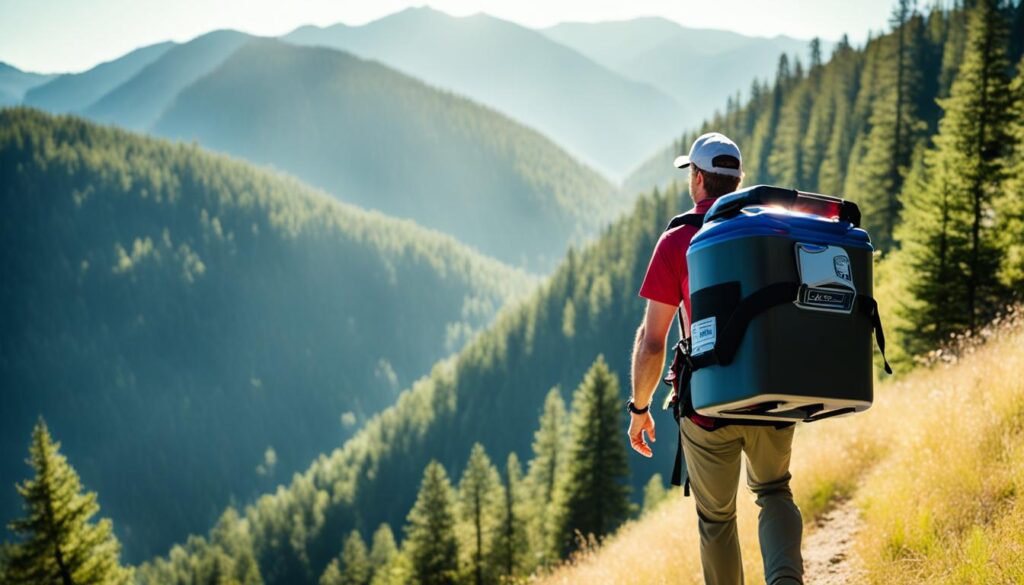
Exploring Additional Features and Options
In addition to standard cooler sizes, there are a variety of specialty coolers available that cater to specific needs and preferences. If you’re planning a boating or fishing trip, consider investing in a marine cooler. These coolers are specially designed to withstand the demands of water activities and offer superior ice retention times, ensuring your food and drinks stay chilled throughout your adventure.
For those looking for a modern twist, electric coolers are a great option. These coolers eliminate the need for ice and rely on electricity to maintain a consistent temperature. With an electric cooler, you won’t have to worry about the hassle of replenishing ice or dealing with water drainage. Simply plug it in and enjoy a cold beverage whenever you please.
To further enhance your camping experience, there is a wide range of cooler accessories available. Integrated dividers help you organize your cooler and keep different items separate. Tie-down points are essential for securing your cooler during transportation, ensuring that it stays in place even on bumpy rides. Built-in bottle openers come in handy for cracking open a refreshing drink, while bear-resistant certifications provide added peace of mind in wildlife-rich environments.
When exploring additional features and options, it’s also important to consider the size and dimensions of the cooler. Make sure it will fit comfortably in your vehicle or boat storage space without hindering your travel plans. Whether you’re looking for specialty coolers, cooler accessories, or the perfect cooler size and shape, there are plenty of options to choose from that will meet your specific camping needs.
FAQ
What factors should I consider when choosing the right cooler size for camping?
When choosing a cooler size for camping, factors to consider include the capacity of the cooler, the duration and type of trip, the number of people, and the type of food and drinks you plan to bring.
How are cooler capacities measured?
Cooler capacities are typically measured in quarts.
What size cooler is best for day trips or solo activities?
Personal coolers, which range from 5 to 16 quarts, are great for day trips or solo activities.
What size cooler is ideal for small family outings or weekend camping trips?
Medium coolers, with capacities between 17 and 35 quarts, are ideal for small family outings or weekend camping trips.
What size cooler is best for larger gatherings or extended camping trips?
Large coolers, with capacities above 36 quarts, are best suited for larger gatherings or extended camping trips.
How do cooler insulation and ice retention affect cooler size?
Coolers with thicker walls generally offer better insulation and can retain ice for longer periods. Larger coolers also tend to have better insulation due to their higher insulation-to-surface-area ratio.
What should I consider regarding the portability and transportation of a cooler?
It’s important to consider the size and weight of the cooler, as well as any handles or wheels that may aid in transportation. Smaller coolers are generally easier to carry, while larger coolers can become heavy and cumbersome.
Are there specialty coolers available for specific needs?
Yes, there are specialty coolers available for specific needs. Marine coolers are designed for boating and fishing trips, while electric coolers function without ice and use electricity to maintain a consistent temperature.
What additional features and options should I consider when choosing a cooler?
It’s worth considering additional features and options such as integrated dividers, tie-down points, built-in bottle openers, and bear-resistant certifications. Also, make sure to consider the size and dimensions of the cooler to ensure it will fit in your vehicle or boat storage space.
